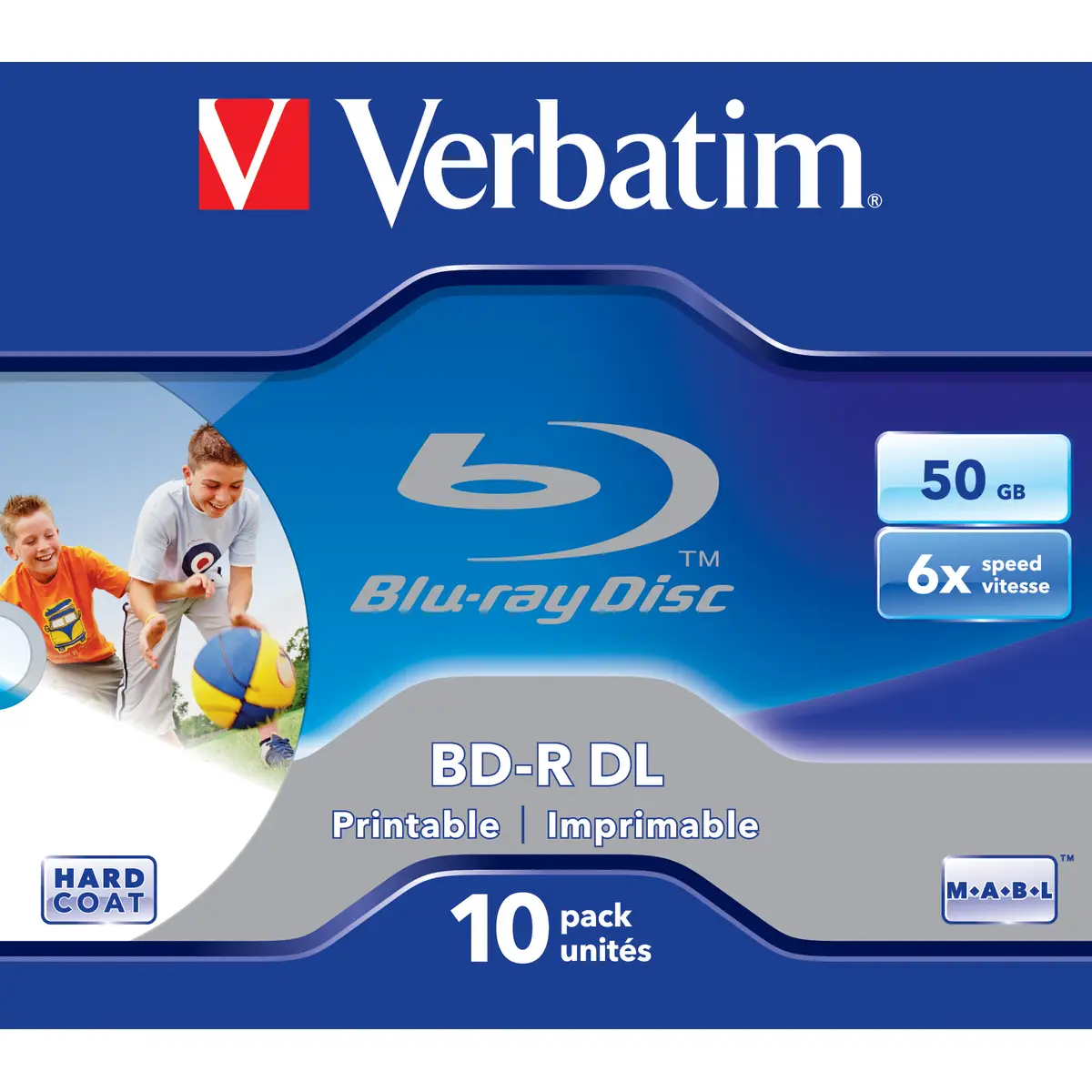Promotions
Promotions
- Mobile Computing
- Computing
- Displays
- Storage
- Network
- Components
- Communication
- Photo / Video
- Server
- Input
- Cabel & Adapter
- Presentation
- Print & Scan
-
Software
- See all
- Security
- Data management
- Network
- Office applications
- Collaboration software
- Graphic / Multimedia
- Virtualization
- Operating systems
- Software
Mobile Computing
Communication
Photo / Video
Server
Presentation
Software
-
Security
-
Data management
-
Network
-
Office applications
-
Collaboration software
-
Graphic / Multimedia
-
Virtualization
-
Operating systems
-
Software
Promotions
Promotions
- Components
- Storage media
- BD-R Rohling 50GB 6fach 10er Pack Jewel Case Printable




2 Images




Product description
The advent of Blu-ray technology has led to the introduction of high capacity storage discs to meet the demand cause by the rapid growth of high definition television (HDTV).
Blu-ray discs get their name from blue laser technology. The shorter wavelength of the laser is the reason it is blue in colour. The blue laser has a wavelength of 405nm compared with the wavelength of 650nm for DVD which utilises red laser technology. The benefit of having a blue laser with a shorter wavelength means it is possible to write smaller data pits and therefore vastly increase the amount of data on the disc.
Blu-ray discs offer 3 to 5 times the storage capacity of a standard recordable DVD disc, enabling the recording, rewriting and playback of high definition video (HD).
Blu-ray discs get their name from blue laser technology. The shorter wavelength of the laser is the reason it is blue in colour. The blue laser has a wavelength of 405nm compared with the wavelength of 650nm for DVD which utilises red laser technology. The benefit of having a blue laser with a shorter wavelength means it is possible to write smaller data pits and therefore vastly increase the amount of data on the disc.
Blu-ray discs offer 3 to 5 times the storage capacity of a standard recordable DVD disc, enabling the recording, rewriting and playback of high definition video (HD).
ID: 107518
Verbatim ID: 43736
BD-R Rohling 50GB 6fach 10er Pack Jewel Case Printable
Detailed product title
Detailed product title
Verbatim BD-R Rohling 50GB 6fach 10er Pack Jewel Case Printable


2 Images
Gross:
incl.
vat.
ship in 4-7 days
Added to cart
Gross:
incl.
vat.
ship in 4-7 days
Product description
The advent of Blu-ray technology has led to the introduction of high capacity storage discs to meet the demand cause by the rapid growth of high definition television (HDTV).
Blu-ray discs get their name from blue laser technology. The shorter wavelength of the laser is the reason it is blue in colour. The blue laser has a wavelength of 405nm compared with the wavelength of 650nm for DVD which utilises red laser technology. The benefit of having a blue laser with a shorter wavelength means it is possible to write smaller data pits and therefore vastly increase the amount of data on the disc.
Blu-ray discs offer 3 to 5 times the storage capacity of a standard recordable DVD disc, enabling the recording, rewriting and playback of high definition video (HD).
Blu-ray discs get their name from blue laser technology. The shorter wavelength of the laser is the reason it is blue in colour. The blue laser has a wavelength of 405nm compared with the wavelength of 650nm for DVD which utilises red laser technology. The benefit of having a blue laser with a shorter wavelength means it is possible to write smaller data pits and therefore vastly increase the amount of data on the disc.
Blu-ray discs offer 3 to 5 times the storage capacity of a standard recordable DVD disc, enabling the recording, rewriting and playback of high definition video (HD).